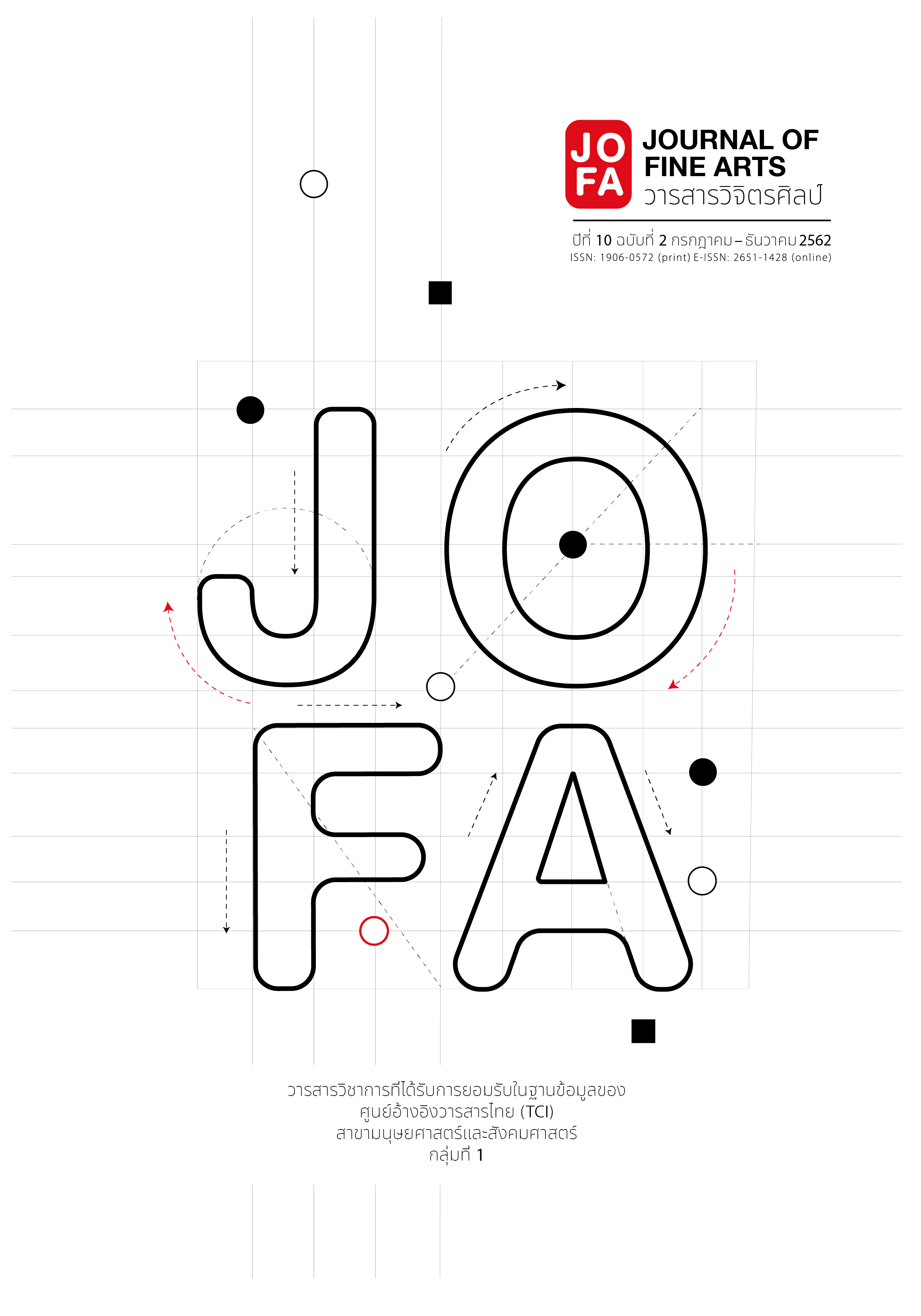The Contemporary Urban Sculpture of Thai Traditional Health.
Main Article Content
Abstract
This creativity research into contemporary urban sculpture of Thai traditional health explores the story of Thai health wisdom and presents a model of contemporary urban sculpture of Thai traditional health.
This research begins with a study of urban sculptures in various countries. It analyses and draws inspiration from the identity of Thai traditional health care, identifying design concepts, to create a draft and modeling sculpture. This model is presented at a meeting of concerned parties, whose input has led to further refinement of the creative work. Finally, a model is presented at the National Herb Expo.
The research was found the concept of sculpture to convey meaning and story by using symbolic images to represent Thai massage, and into the development of sculptures for use in public areas, by condensing the identity of Thai massage into abstract designs for decorative purposes. This was borne out in the attempt to decorate the Thai herbal garden according to Sapaya (comfort) and the four basic elements of the earth: clay, water, wind, and fire. These sculpture sets can communicate meaningful stories and unique values of Thai massage and procedures, in the practical forms of a Thai massage posture (i.e. a pot with a fountain in the center of the sculpture with a beautiful light illuminated), garden chair sculptures, a sculpture with a slide (to be used in a playground), which can decorate both interior and exterior spaces.
Article Details
References
.com/historical.php?id=11
2. “เบลเยียม สวรรค์แห่งช็อกโกแลต ตอนที่ 1 เยือน บรัสเซล.” Mthai (2556). สืบค้นเมื่อวันที่ 1 พฤษภาคม, 2561. https://travel.mthai.com/world-travel/68092.html.
3. เผ่าทอง ทองเจือ. “เขามอ.” ไทยรัฐ, 16 พฤษภาคม 2557. สืบค้นเมื่อวันที่ 1 พฤษภาคม, 2561.
https://www.thairath.co.th/content/422910.
4. วรรณรัตน์ ตั้งเจริญ. การศึกษากระบวนการออกแบบและการผลิตเครื่องประดับ เรเน่ ลาลีค ปี 1890 - 1912. กรุงเทพมหานคร: มหาวิทยาลัยศรีนครินทรวิโรฒ, 2553.
5. วิรุณ ตั้งเจริญ. “สร้างวิชาการศิลปกรรม มาตรฐานวิชาการทัศนศิลป์.” เอกสารประกอบการบรรยายการสัมมนาการทางวิชาการเรื่องการสร้างงานวิชาการงานศิลป์ ณ ศูนย์ประชุมบางกอกคอนเวนชันเซ็นเตอร์ เซ็นทรัลเวิลด์ ราชประสงค์ กรุงเทพฯ, 26 สิงหาคม, 2555.
6. สมศักดิ์ ศรีสันติสุข. ระเบียบวิธีวิจัยทางสังคมศาสตร์:หลักการหาความรู้วิธีการเนินการวิจัยวิเคราะห์ข้อมูลและเขียนรายงาน. ขอนแก่น: ขอนแก่นการพิมพ์, 2536.
7. อรัญ วานิชกร. “ศิลปกรรมเพื่อแสดงภาพลักษณ์การแพทย์แผนไทย.” ศิลปกรรมสาร 10, ฉ. 2 (2558): 161-184.
8. อรัญ วานิชกร. “การออกแบบสินค้าที่ระลึกพหุลักษณ์จากสปาและการนวดไทยเพื่อยกระดับการท่องเที่ยวเชิงสุขภาพ.” รายงานการวิจัย, ทุนวิจัยคณะศิลปกรรมศาสตร์: มหาวิทยาลัยศรีนครินทรวิโรฒ, 2560.
9. อารี สุทธิพันธ์. เพราะผมทำอย่างนี้หรือ เขาจึงให้เป็นศิลปินแห่งชาติ. กรงเทพฯ: พริ้นสโตนส์, 2556.
10. “Atomium สถาปัตยกรรมแห่งวิทยาการ.” Mthai (2555). สืบค้นเมื่อ 1 พฤษภาคม 2561 จาก https://travel.mthai.com/world-travel/37352.html.
11. Quinn, Lorenzo. “THE FORCE OF NATURE II.” สืบค้นเมื่อ 1 พฤษภาคม 2561, https://www.lorenzoquinn.com/portfolio-items/the-force-of-nature-2-england/.
12. Tada Ratchagit . “Tetsujin 28-go จากวีระบุรุษในโลกการ์ตูน สู่ฮีโร่แห่งโลกความเป็นจริง.” Japantravel
(12 พฤศจิกายน 2557). สืบค้นเมื่อวันที่ 1 พฤษภาคม, 2561. https://th.japantravel.com /tetsujin-28-go-鉄人28号/16664.


